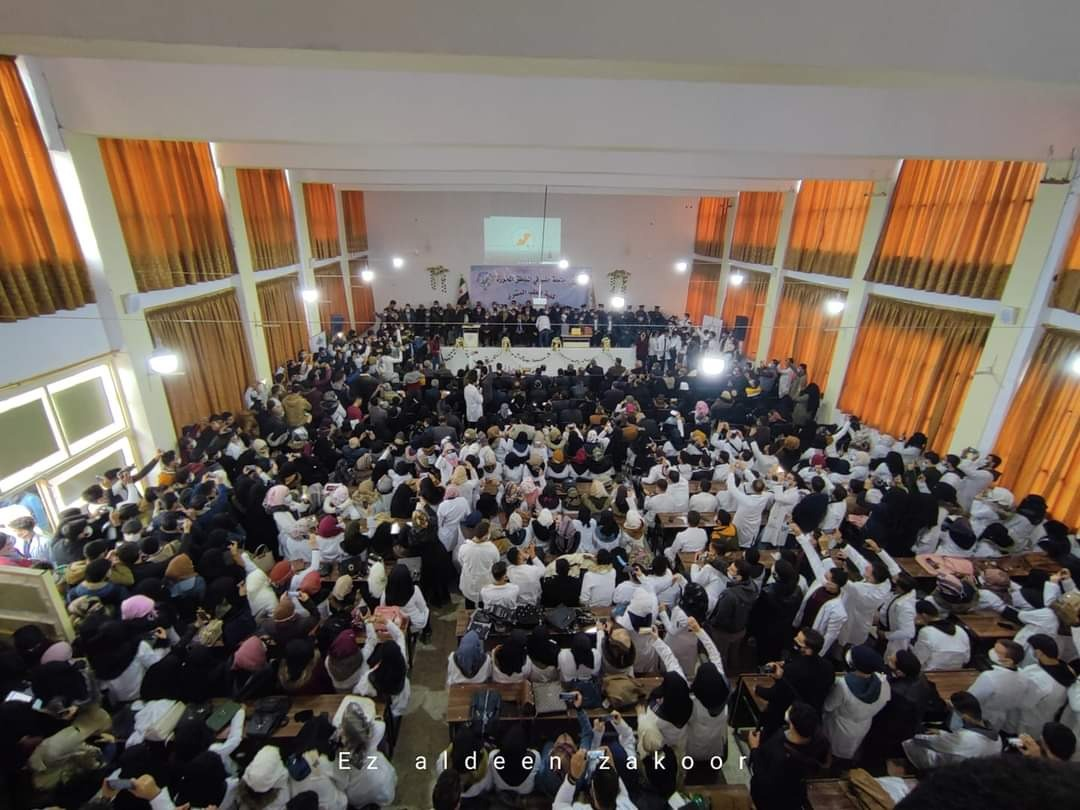This photo, shared online on November 21, 2020, shows overcrowding during a graduation ceremony in the school of medicine at Aleppo ‘Free’ University in Izaz city in the northern suburbs of Aleppo governorate, with those present clearly ignoring the importance of maintaining social distancing which violates all the precautionary measures introduced to prevent the spread of the COVID-19 pandemic among the public. SNHR notes that the number of infection cases in northwest Syria is continuing to increase, reaching 13.848 cases, including 117 deaths, according to a statement issued by the epidemiological surveillance laboratory of the Early Warning, Alert and Response Network (EWARN) on November 20, 2020.
We affirm that the responsibility for raising awareness and ensuring compliance with these essential health measures lies with the local council and the governing forces and the controlling parties. Accordingly, the Syrian Islamic council and National Coalition for Syrian Revolutionary and Opposition Forces, in coordination with all its apparatuses and bodies, must take serious action in regard to this issue, by promoting and encouraging the wearing of masks and the idea of physical and social distancing, and by issuing bulletins and regular data on the latest figures and following up on the implementation of these measures in order to safeguard all members of society and minimize the risk of infection and death.


